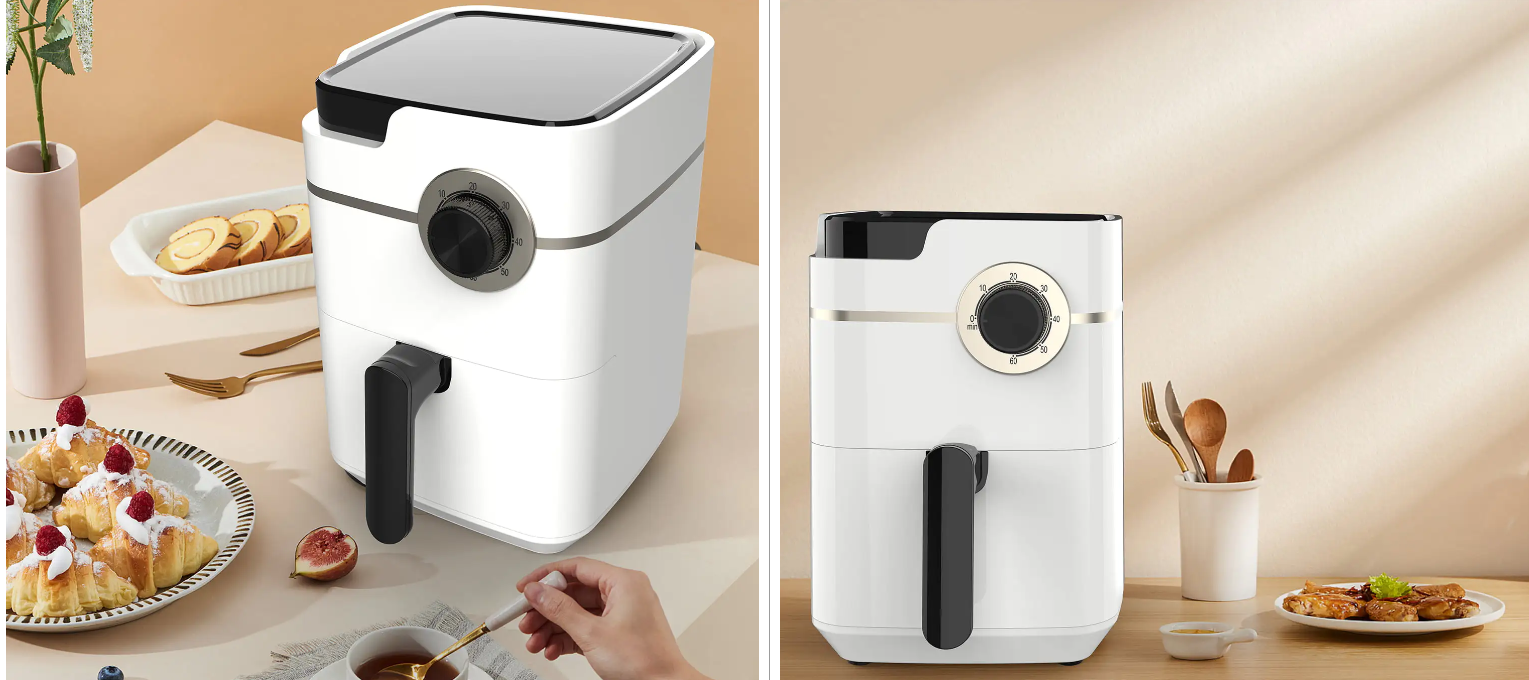Air fryers do help reduce oil intake, but they don't completely eliminate the need for oil. Air fryers cook food by circulating hot air, using the high-temperature airflow to quickly heat the food's surface, creating an effect similar to deep-frying. However, compared to traditional frying, it requires far less oil, sometimes even none at all.
1. The Principle of Air Fryers Reducing Oil Intake
(1) Less or No Oil: Traditional frying usually requires soaking food in a large amount of oil, which is absorbed by the food, resulting in a high oil content. Air fryers use hot air instead of large amounts of oil, producing a crispy exterior and tender interior with little or no oil. Many foods only require a thin layer of oil, and in some cases, no oil at all.
(2) Fat Drainage: Air fryers use high-temperature airflow to crisp the food's surface, while excess fat drains into the oil collection tray at the bottom, reducing the food's oil content. This method is healthier than traditional frying.
(3) Lower Calorie Intake: Due to the reduced use of oil, the food is relatively low in calories, thus reducing excessive calorie and fat intake, which can help maintain health, lose weight, or control cholesterol.
However, air fryers are not completely oil-free. Although air fryers can reduce the amount of oil used, sometimes a moderate amount of oil is still needed to enhance the texture and flavor of food, especially for some ingredients (such as fried chicken wings, French fries, etc.). This means that air fryers can significantly reduce oil intake, but cannot completely eliminate oil, and the amount of oil used should still be reasonably controlled according to individual needs.

2. Foods Suitable for Air Frying
Vegetables: Such as carrots, potatoes, pumpkins, etc., coated with a thin layer of oil can retain nutrients and enhance flavor.
Low-fat meats such as chicken breast and fish: Using an air fryer for quick cooking reduces oil intake.
Traditional fried foods such as French fries and fried chicken: Air fryers can provide a crispy coating similar to deep-frying, but with reduced oil usage.
3. Comparison between air fryers and traditional frying
| Characteristics | Traditional Deep-frying | Air Fryer |
| Oil Usage | Requires a lot of oil | Uses little or no oil |
| Food Fat Content | High, as food absorbs the oil | Lower, excess oil drains away |
| Taste | Crispy on the outside and tender on the inside, may be greasy | Crispy on the outside and tender on the inside, less greasy |
| Healthiness | Less healthy, increases calorie intake | Healthier, reduces calorie and fat intake |
| Ease of Use | Requires careful control of oil temperature and amount | Easier to operate, often without oil splattering and cleaning problems |
Air fryers can indeed help reduce oil intake, especially for people who enjoy fried foods in their daily diet. By using hot air instead of large amounts of oil, air fryers allow you to enjoy delicious food while reducing your oil intake, thus contributing to a healthier diet. However, the healthiest way to use them is to use oil in moderation and combine them with a variety of ingredients and cooking methods. If your goal is to reduce your body fat and calorie intake, an air fryer is undoubtedly a great tool.

 EN
EN
 English
English 中文简体
中文简体
.png)









